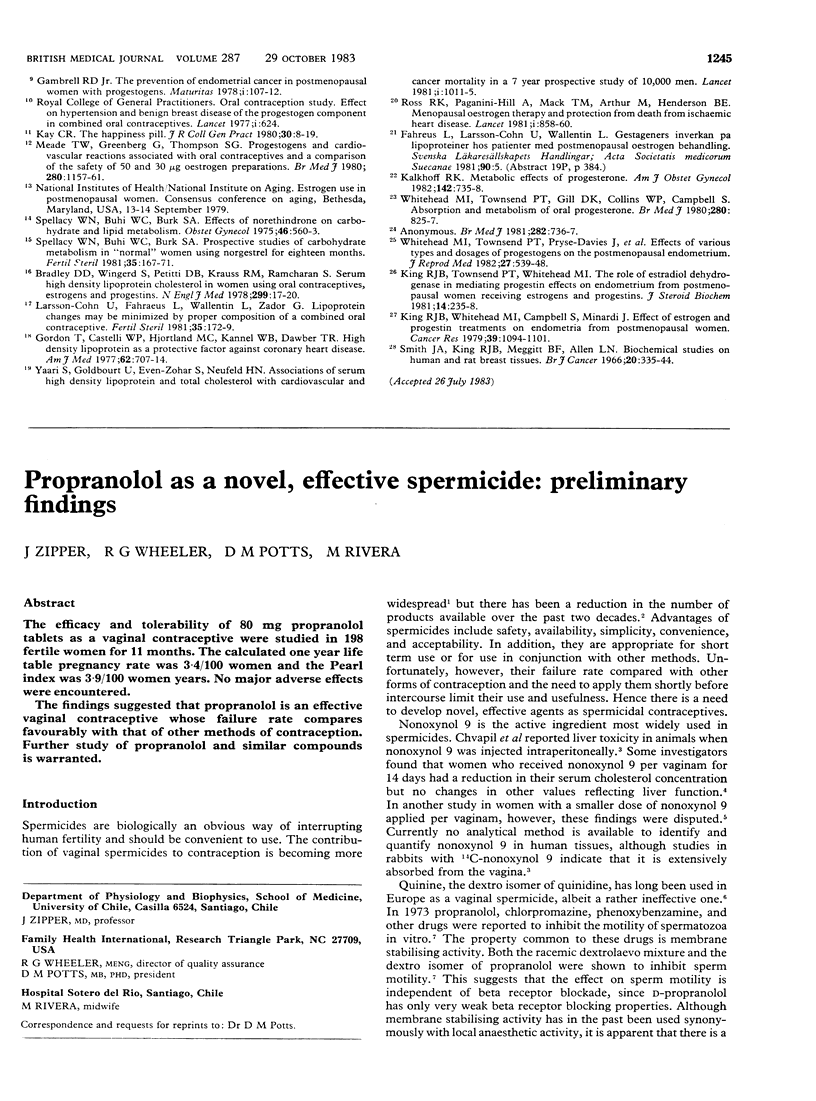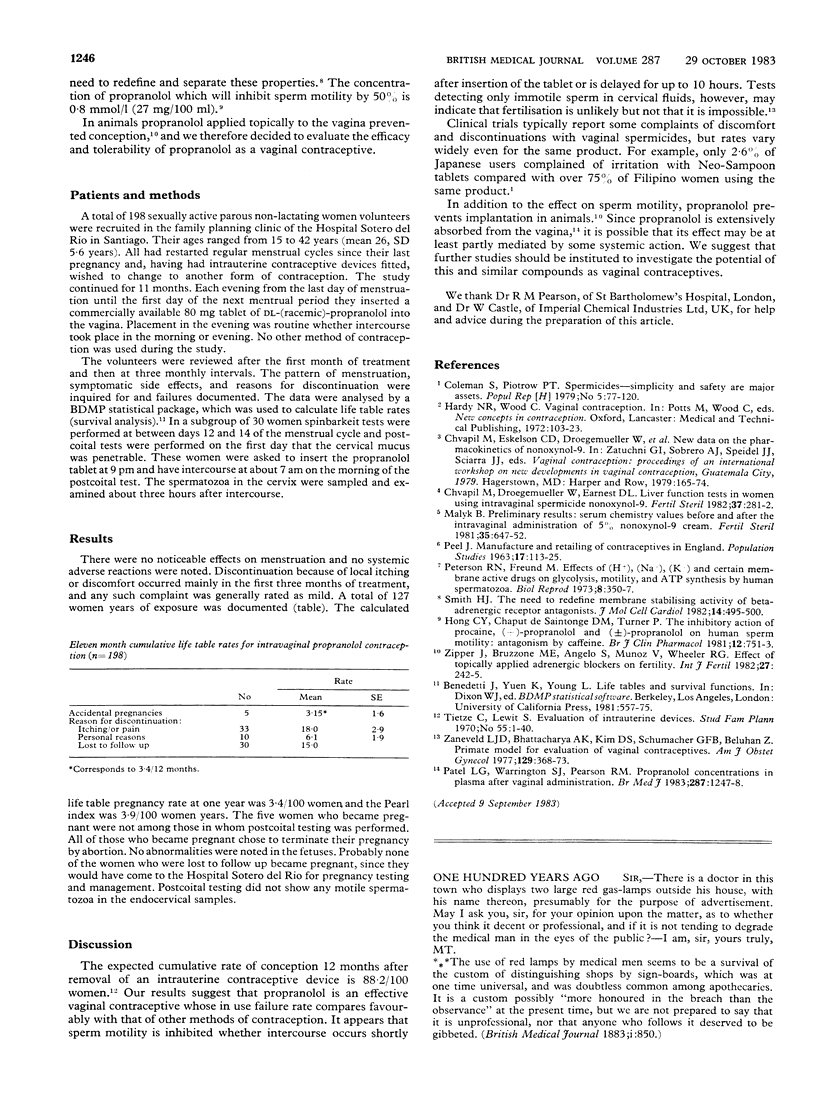Abstract
The efficacy and tolerability of 80 mg propranolol tablets as a vaginal contraceptive were studied in 198 fertile women for 11 months. The calculated one year life table pregnancy rate was 3.4/100 women and the Pearl index was 3.9/100 women years. No major adverse effects were encountered. The findings suggested that propranolol is an effective vaginal contraceptive whose failure rate compares favourably with that of other methods of contraception. Further study of propranolol and similar compounds is warranted.
Full text
PDF

Selected References
These references are in PubMed. This may not be the complete list of references from this article.
- Chvapil M., Droegemueller W., Earnest D. L. Liver function tests in women using intravaginal spermicide nonoxynol-9. Fertil Steril. 1982 Feb;37(2):281–282. doi: 10.1016/s0015-0282(16)46058-9. [DOI] [PubMed] [Google Scholar]
- Hong C. Y., Chaput de Saintonge D. M., Turner P. The inhibitory action of procaine, (+)-propranolol and (+/-)-propranolol on human sperm motility: antagonism by caffeine. Br J Clin Pharmacol. 1981 Nov;12(5):751–753. doi: 10.1111/j.1365-2125.1981.tb01301.x. [DOI] [PMC free article] [PubMed] [Google Scholar]
- Malyk B. Preliminary results, serum chemistry values before and after the intravaginal administration of 5% nonoxynol-9 cream. Fertil Steril. 1981 Jun;35(6):647–652. doi: 10.1016/s0015-0282(16)45558-5. [DOI] [PubMed] [Google Scholar]
- Patel L. G., Warrington S. J., Pearson R. M. Propranolol concentrations in plasma after insertion into the vagina. Br Med J (Clin Res Ed) 1983 Oct 29;287(6401):1247–1248. doi: 10.1136/bmj.287.6401.1247. [DOI] [PMC free article] [PubMed] [Google Scholar]
- Peterson R. N., Freund M. Effects of (H + ), (Na + ), (K + ) and certain membrane-active drugs on glycolysis, motility, and ATP synthesis by human spermatozoa. Biol Reprod. 1973 Apr;8(3):350–357. doi: 10.1093/biolreprod/8.3.350. [DOI] [PubMed] [Google Scholar]
- Tietze C. Evaluation of intrauterine devices: ninth progress report of the Cooperative Statistical Program. Stud Fam Plann. 1970 Jul;(55):1–40. [PubMed] [Google Scholar]
- Zaneveld L. J., Bhattacharyya A. K., Kim D. S., Schumacher G. F., Beluhan Z. Primate model for the evaluation of vaginal contraceptives. Am J Obstet Gynecol. 1977 Oct 15;129(4):368–373. doi: 10.1016/0002-9378(77)90578-6. [DOI] [PubMed] [Google Scholar]
- Zipper J., Bruzzone M. E., Angelo S., Muñoz V., Wheeler R. G. Effect of topically applied adrenergic blockers on fertility. Int J Fertil. 1982;27(4):242–245. [PubMed] [Google Scholar]


